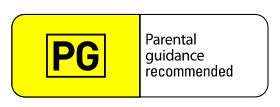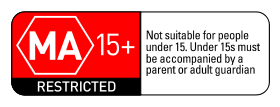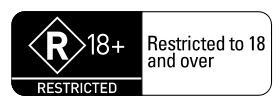- Australian Classification Board
-
Australian Classification Board Agency overview Formed 1970 Jurisdiction Commonwealth of Australia Minister responsible Robert McClelland, Attorney-General Parent agency Attorney-General's Department (current parent agency), OFLC (Original parent agency), Australian Classification Review Board (sister agency) Website http://www.classification.gov.au The Australian Classification Board is a statutory classification body formed by the Australian Government which classifies films, video games and publications for exhibition, sale or hire in Australia since its establishment in 1970. The Australian Classification Board was originally incorporated in the Office of Film and Literature Classification which was dissolved in 2006. The Attorney-General's Department now provides administrative support to the Board. Decisions made by the Board may be reviewed by the Australian Classification Review Board.
Contents
Organizations
The Classification Board is a statutory body established by the Classification (Publications, Films and Computer Games) Act 1995 (Cth). This Act also provides a basis for the National Classification Code which guides their decision making. As the State and Territory governments retain responsibility for enforcing censorship and could withdraw from or ignore the national classification scheme if they so wished, any changes to the national classification scheme must be agreed to by all the State and Territory Censorship Ministers (usually Attorneys-General). Despite this South Australia still maintains a separate Classification Council which can override national classification decisions in that state.
The Classification Board does not directly censor material by ordering cuts or changes. However, they are able to effectively censor media by refusing classification and making the media illegal for hire, exhibition and importation to Australia.
History
1970 saw the introduction of a newly formed classification system and body named the Australian Classification Board, a federal body that was been created to rate all films (and later in 1994, video games) that come into Australia. In the early years of the system, there were four ratings: G, for "General Exhibition"; NRC, "Not Recommended for Children"; M, for "Mature Audiences"; and R, for "Restricted Exhibition".[1] NRC later became PG and R became R18+, the G and M ratings were kept.
In 1993, the ACB introduced the MA15+ rating to fill in the gap between the M rating and the R18+ rating, due to complaints about films such as The Silence of the Lambs being too strong for the M rating (not recommended for younger audiences though any age is still allowed in) though not too high in impact to be rated R18+ (no one under 18 years of age).
The introduction of the Office of Film and Literature Classification (OFLC) occurred in 1994. The OFLC overlooked the Australian Classification Board. In 2005 the OFLC was dissolved and the Australian Classification Board was handed over to the Attorney-General's Department.
On 22 July 2011, a meeting of attorneys-generals produced an in-principle agreement to introduce the R18+ classification for videogames, however, NSW Attorney-General Greg Smith abstained from the vote. The Home Affairs Minister, Brendan O'Connor, has said the federal government would over-ride NSW and implement the R18+ rating regardless of its decision and will be officially available before the end of 2011.[2] On 10 August the NSW attorney-general agreed on the R18+ thus the rating would be accepted and available to all states before the end of 2011 and Brenden O'connor would not need to use the federal government to intervene.[3]
On 30 October 2011, the Classification Board applications manager David Emery stated that the R18+ Classification is "still at least two years away." [4]
Controversy
Certain officials were concerned the appointment of Donald McDonald as Director in 2007 facilitated the Government's ability to control or restrict material, in particular that which incites or instructs terrorism.[5] McDonald was also pressured to step down after the ban of Salò, or the 120 Days of Sodom lifted.
Classification of film
In 2010, the ACB classified an uncut version of Salo R18+, mainly due to extra material providing greater context. It had been banned since 1997 with two failed attempts since then.
Classification of video games
Despite a line in the National Classification Code stating that "adults should be able to read, hear and see what they want", the adult R18+ classification does not currently exist for video games.[6] Michael Atkinson, who was the South Australian Attorney-General until 2010, was a continuous opponent against introduction of the R18+ classification, and actively blocked the release of a discussion paper until just before his retirement, that canvassed the opinion of the Australian public on whether or not an R18+ classification should be introduced. In July 2011, the R18+ rating has been announced and is scheduled to be introduced before the end of the year.[7][2]
Despite the various controversies that have arisen with the classification of videogames within Australia, there are many examples of games getting much more lenient ratings compared to other countries. Such games would include Halo 3 which got an M (15 from BBFC, M17+ from ESRB, New Zealand's OFLC a R16), The Witcher which got an MA15+ (18 from PEGI, BBFC, and USK), Dead Rising and its sequel getting a MA15+ (18 from BBFC, PEGI and CERO), Dead or Alive Xtreme 2 getting a PG (17+ from ESRB and CERO), Zone of the Enders (and its sequel) getting a G8+/PG (R16 from New Zealand's OFLC, M17+ from ESRB, 15 from BBFC), Sherlock Holmes: The Awakened getting a PG (M17+ from ESRB, 16+ from PEGI), Neo Contra getting a G8+/PG (M17+ from ESRB, 15 from CERO) and Ar tonelico Qoga: Knell of Ar Ciel with a PG rating (M17+ from ESRB, 15 from CERO).
Film and video game classifications
Advisory
The classifications below are advisory in nature—they do not impose any legal restrictions on access or distribution of material.[8]:
- E (Exempt from Classification) - Only very specific types of material (including educational material and straight records of artistic performances) can be exempted from classification, and the material cannot contain anything that might lead to an M rating or higher. [1] The assessment of exemption may be made by the distributor or exhibitor (self-assessed) without needing to submit the product for certifying by the Classification Board. Self-assessed exempt films cannot use the official marking, although it is advised that films and computer games that are self-assessed as exempt display “This film/computer game is exempt from classification”. This means that the selected material cannot be rated.
- G (General) – Contains material intended for general viewing. However, G does not necessarily designate a children’s film or game as many of these productions contain content that would be of no interest to most children.
- The content is very mild in impact.
- PG (Parental guidance recommended) – Contains material that young children may find confusing or upsetting, and may require parental supervision.
- The content is mild in impact.
- M (Recommended for mature audiences) – Contains material that may require a mature perspective but is not deemed too strong for younger viewers.
- The content is moderate in impact.
Restricted
By contrast, the classifications below are legally restricted—i.e., it is illegal to sell or exhibit materials so classified to a person younger than the respective age limit.[8]
- MA15+ (Mature Accompanied for those under 15) - Contains material that is considered unsuitable for exhibition by persons under the age of 15. Persons under said age may only legally purchase, rent, exhibit or view MA15+ rated content under the supervision of an adult guardian. The exhibition of these films to people under the age of 15 years who are not supervised by a parent or legal guardian is a criminal offence.
- The content is strong in impact
- R18+ (Restricted to 18 and over) - Contains material that is considered unsuitable for exhibition by persons under the age of 18. People under said age may not buy, rent, exhibit or view these films. The exhibition of these films to people under the age of 18 years is a criminal offence.
- The content is high in impact.
- X18+ (Restricted to 18 and over) - Contains material that is pornographic in nature. People under 18 may not buy, rent, exhibit or view these films. The exhibition of these films to people under the age of 18 years is a criminal offence.
- The film contains sexually explicit content.
- This rating applies to graphic/unsimulated sexual content only. Films classified as X18+ (Restricted) are banned from being sold or rented in all Australian states and are only legally available in the Australian Capital Territory and the Northern Territory. Importing X18+ material from these territories to any of the Australian states is legal, though.
- RC (Refused Classification)(Banned) - Contains material that offend against the standards of morality, decency and propriety generally accepted by reasonable adults to the extent that it should not be classified
- The content is very high in impact.
- Films which are very high in impact and/or contain any type of violence in conjunction with real sexual intercourse are Refused Classification by the ACB. Films which may be Refused Classification include content that:
- Depict, express or otherwise deals with matters of sex, drug misuse or addiction, crime, cruelty and violence in a revolting or abhorrent nature
- Depict in a way that is likely to cause offence to a reasonable adult a minor who is, or who appears to be, under 18 (whether or not engaged in sexual activity).
- Promote, incite or instruct in matters of crime or violence.
Classification is mandatory, and films that are rated Refused Classification by the ACB are banned for sale, hire or public exhibition, carrying a maximum fine of $275,000 and/or 10 years jail. It is, however, legal to possess RC films (except in Western Australia and parts of the Northern Territory), unless they contain illegal content (e.g. child pornography).Previous video game ratings
These ratings are still shown on some older video games that are still on sale in Australia:
Members
The current permanent members of the Classification Board[9]:
- Donald McDonald (Director)
- Jeremy Fenton (Senior Classifier)
- Georgina Dridan
- Greg Scott
- Amanda Apel
- Zahid Gamieldien
- Moya Glasson
- Sheridan Traise
Literature ratings
 – Unrestricted
– Unrestricted – Unrestricted – Mature- Not recommended for readers under 15.
– Unrestricted – Mature- Not recommended for readers under 15. – Restricted Category 1 – Not available to persons under 18 years.
– Restricted Category 1 – Not available to persons under 18 years. – Restricted Category 2 – Pornographic in nature; restricted as above.
– Restricted Category 2 – Pornographic in nature; restricted as above.Literature only needs to be classified if it contains anything that might lead to a Category 1 classification or higher. Any classified literature that does NOT fall into any of the above categories is rated Refused Classification (Banned). It is uncommon for these ratings to appear on books.
Reviews
In 2008, the board made a decision on whether or not nude photos displayed in an exhibition of work by Bill Henson should have been removed or not. The review found the photograph was "mild and justified".[10]
See also
- Censorship in Australia
- Advertising Standards Bureau (Australia)
- Banned films - includes an extensive list of films banned in Australia
- Banned video games
- Video game controversy - includes the history of games censorship in Australia
- Internet censorship in Australia
- List of pornography laws by region - Australian hardcore pornography laws
- Australian Classification Review Board - Reviews appeals made by publishers/government officials if they are unhappy with a rating given by the ACB
International rating systems
- Europe - Pan European Game Information
- Finland - Valtion elokuvatarkastamo
- Germany - Unterhaltungssoftware Selbstkontrolle
- Japan - Computer Entertainment Rating Organization
- New Zealand - Office of Film and Literature Classification
- North America - Entertainment Software Rating Board and Motion Picture Association of America
- United Kingdom - British Board of Film Classification
References
- ^ "Censorship Classifications". Sydney Morning Herald: p. 87. 1 July 1973. http://news.google.com/newspapers?id=uLIpAAAAIBAJ&sjid=JuUDAAAAIBAJ&pg=4106,478776&dq=fritz+the+cat&hl=en. Retrieved 18 September 2010.
- ^ a b Asher Moses, Ben Grubb (22 July 2011). "'Historic agreement' on R18+ video games". The Sydney Morning Herald. http://www.smh.com.au/digital-life/games/historic-agreement-on-r18-video-games-20110722-1hs78.html#ixzz1C7Pkl0Tl. Retrieved 22 July 2011.
- ^ http://au.gamespot.com/news/6328240/nsw-backs-r18-for-games
- ^ http://games.on.net/article/14105/OFLC_Bigwig_R18_Rating_For_Games_is_Still_at_Least_Two_Years_Away
- ^ Censure as PM's pal turns censor
- ^ The Classification Code; May 2005
- ^ "Governments agree on R18+ games rating". ABC News. Australian Broadcasting Company. 22 July 2011. http://www.abc.net.au/news/2011-07-22/games-rating-agreement/2806200. Retrieved 3 November 2011.
- ^ a b Classification Ratings Fact Sheets
- ^ Classification Board Members
- ^ "Police clear Australian artist of pornography". Sydney Morning Herald (Fairfax Digital). 6 June 2008. http://news.smh.com.au/world/police-clear-australian-artist-of-pornography-20080606-2muj.html. Retrieved 12 May 2010.
External links
- The R18+ Discussion Paper Submissions due 28 February 2010.
- The Australian Government Classification Website Includes info about classification system, Board member profiles and a public searchable database of classification decisions
- Inside Film Magazine's Phillip Cenere reports on the ACB International Ratings Conference
- Refused-Classification.com Database of films, games, and books that have had problems with the ACB
- Libertus Australia Website maintained by Irene Graham, the executive director of EFA.
- The Chopping List Database of films that have had censorship problems in Australia
Video game classifications and controversies Computer and
video game lawGame content
rating boardsActiveAustralia · Brazil · Canada, Mexico and the United States · Europe · Finland · Germany · Iran · Japan · New Zealand · South Korea · Republic of China (Taiwan) · United Kingdom
OtherDefunctPlatforms: 3DO · PC · Sega consoles
Countries: South Korea · United Kingdom · FranceLawsuits James v. Meow Media · Strickland v. Sony · Entertainment Software Association v. Foti · Brown v. Entertainment Merchants Association
Groups People Genres Categories:- Australian classification system
- Censorship in Australia
- Commonwealth Government agencies of Australia
- Video game content ratings systems
- Video game organizations
Wikimedia Foundation. 2010.














